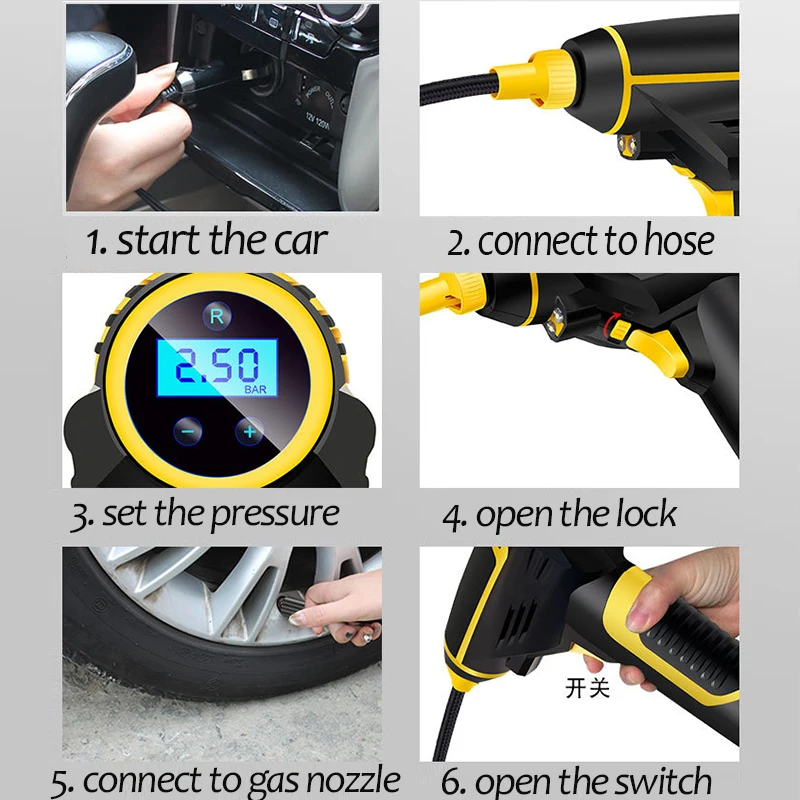You never know when you may experience a flat tire. It can happen to anyone at the most inconvenient time. Maintaining correct tire pressure affects a tire’s wear and improves its performance. Luckily, you can easily inflate almost any tire at your job site if you have an air compressor. Read on to learn how to use an air compressor on your flat tire.
You need to know how much air pressure must go into the tire. Most construction vehicles need at least 100 pounds per square inch, or PSI, in each tire. The exact amount might vary depending upon the axle load, number of tires per axle, and weather. Check the vehicle’s owner’s manual for the proper tire pressure amount.
Avoid using the PSI number found on the tire’s sidewall since that expresses the maximum amount of pressure. You need this information to know what type of air compressor to get. A smaller air compressor tank keeps the pressure between 100 to 150 PSI.
A tire gauge can tell you how much compressed air your tires need to have added. If you put too much air into tires, you can experience performance and handling issues. If you don’t put enough air into the tires, they can experience extra friction that raises the rubber’s temperature. Heat is harmful to tires and can cause damage to the steel cords inside. Many tire manufacturers state that for every 3 PSI below the recommendation, you burn 1 percent more fuel and add 10 percent extra tire wear.
When filling up the tires, try to do so when they’re cold. Cold temperatures can give you a more accurate reading. Hot tires show higher air pressure when you use the tire gauge. If you get a flat tire while driving, wait about 30 minutes for the tire to cool. If this is not an option, inflate the tires to 3 PSI over the recommended amount.
Each tire should have a stem cap screwed to the top of the valve stem. Remove the cap and put it to the side, but make sure you don’t misplace it. When the cap is off the valve, even if it’s just for a minute, some of the leftover air could escape. Avoid removing the cap until you’re ready to use the compressor.
When the cap is off the valve, even if it’s just for a minute, some of the leftover air could escape. Avoid removing the cap until you’re ready to use the compressor.
Typical air compressors run on electrical power. Plug in the air compressor to let it accumulate with air. Smaller units have a two-prong plug, while medium and larger compressors may need a three-prong plug. Make sure you’re using outlets with the correct voltage for the compressor. Running the compressor on the wrong circuit can blow the compressor, circuit, or both. Once you turn on the compressor, you will hear the compressor motor begin to work. Portable units have tires, so you can easily move them around.
Try to situate the compressor near the flat tire since you cannot move the vehicle. Attach the air hose to the compressor and include the quick coupler at the end. This fastener lets you push air into the valve stem. If there’s a safety position on the nozzle, make sure that you activate it.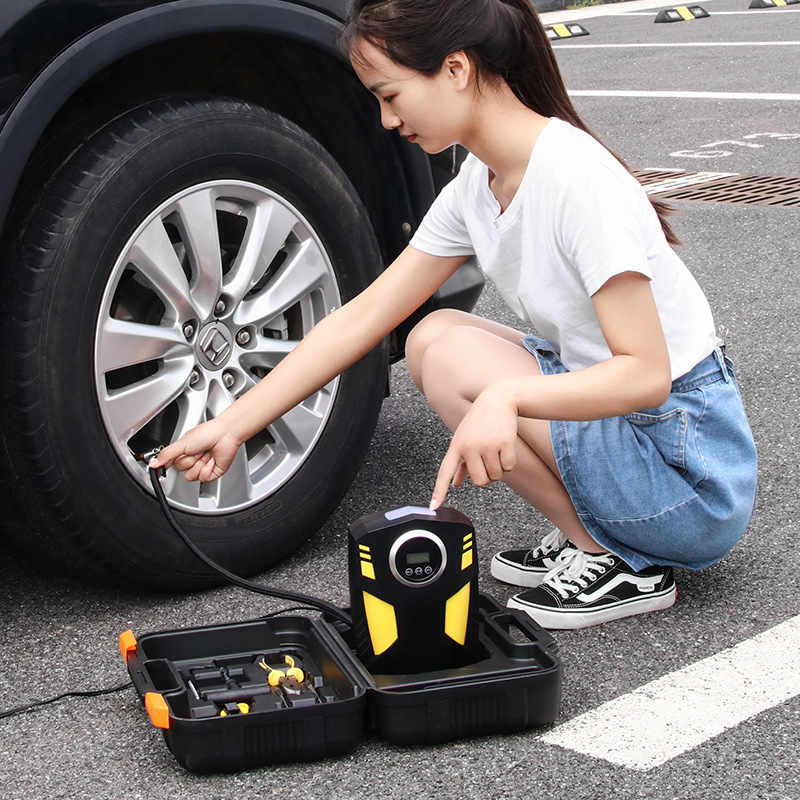 Secure the hose to the valve stem and turn on the machine.
Secure the hose to the valve stem and turn on the machine.
Depending upon how flat the tire is, filling the tire up with air may take some time. Many air compressors have gauges that guide you, so you add the correct amount of air. Some inflators even turn off automatically when the desired air pressure is reached. Digital inflators are another option, and they give you a more accurate reading. Avoid walking away from the compressor while it is running, as you don’t want the tires to overinflate.
While filing up the tire, check the tire pressure occasionally. Most digital inflators automatically monitor the pressure and shut off when the desired pressure is reached. If you accidentally add too much air, push down on the tire gauge to release some of the air. When you have the right amount of air, remove the hose from the compressor. You might hear a hissing noise when you remove this piece. Don’t worry as this is perfectly normal. Put the stem cap back on the valve.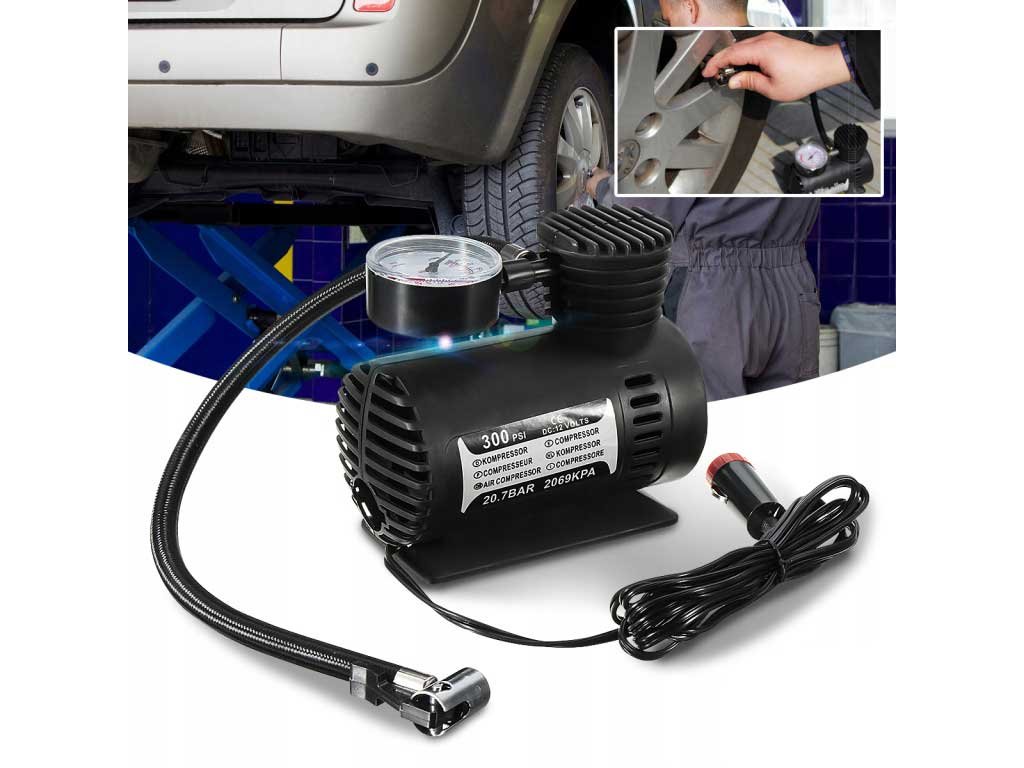
If you are unlucky enough to experience a flat tire, don’t worry. You can easily use an air compressor and a few simple tools to inflate the flat tire. By following a few simple tips, you can get back on the road in no time.
If your car tires need a little air, you can always pull into the gas station to use the machine. However, you may not know how to use a gas station air pump or you might be confused about how to properly inflate your tires.
In this guide, we walk through all of the steps with you, so you can pump up the car tires properly. Additionally, we show you some hidden benefits of using the gas station air. We also review the benefits of maintaining proper tire air pressures.
How to Use a Gas Station Air PumpTo use a gas station air pump, you need to find the air compressor and park near it.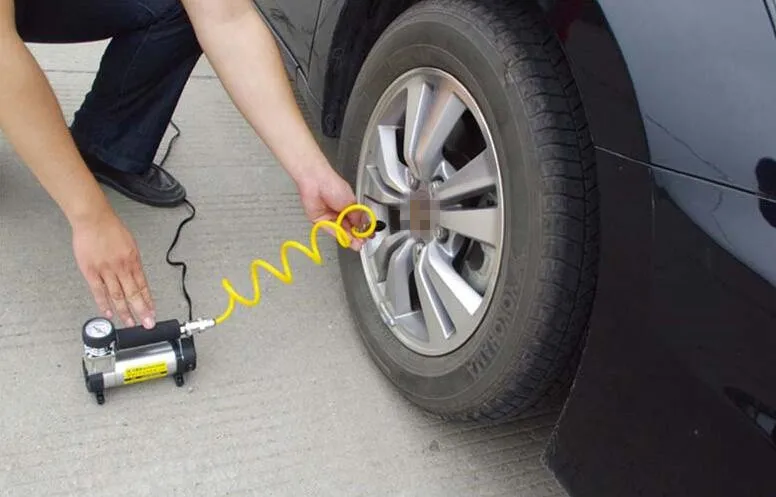 Once you remove the air nozzle, you can pay for the air and adjust the settings. Remove the tire valve cap and inflate the tires. Check the pressures when you are done and return the hose to its original place.
Once you remove the air nozzle, you can pay for the air and adjust the settings. Remove the tire valve cap and inflate the tires. Check the pressures when you are done and return the hose to its original place.
Here are more detailed steps on how to use the gas station air pump:
1. Locate Air CompressorUnless you have used the air pressure machines before, you might not know where to find them or understand what they look like. Normally, the air machines aren’t right with the gas pumps, but off to the side somewhere.
There will be a sign on the machine that indicates its purpose. You might even see something, such as “Free Air.”
2. Park Near the CompressorAfter you locate the air pump, you need to park as close as possible to it. The hose should be able to easily reach the tire or tires that need to be filled up.
If you park and realize you are too far away, just inch it a little closer. You can leave the car engine running to make it easier.
Inspect the air hose to make sure it is in decent condition. If it isn’t, you might want to choose a different machine to use.
Once you’ve approved the hose, you want to move it to where the tire is, especially if you are paying for it. You want to be ready to fill up those tires when it goes on.
4. Pay for MachineSome machines are free and you won’t have to pay anything. Other times, you will be required to enter some quarters or use your credit card to get it started.
If you don’t have quarters, you might be able to get some change from the gas station. Once the money is inserted, the air will turn on for a specified amount of time.
5. Set Appropriate PSI MarkSome machines offer settings for the PSI. You can find this number on the card mounted on the inside of the driver’s side door jamb.
This measurement shows what the tires should be inflated to.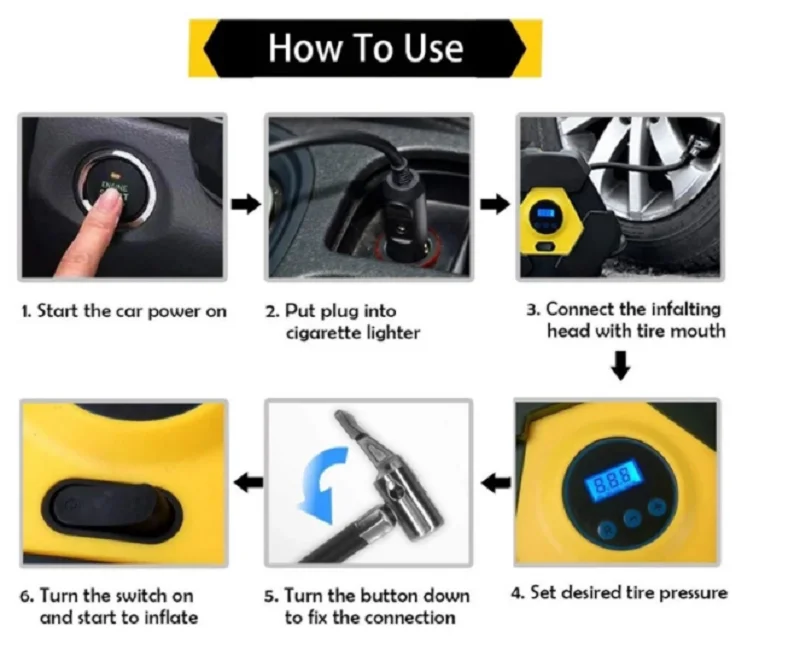 Adjust the settings to match this number. If the machine doesn’t offer this, you will need to keep a close eye on how much air is being put in the tire.
Adjust the settings to match this number. If the machine doesn’t offer this, you will need to keep a close eye on how much air is being put in the tire.
RELATED: How to Find the Correct Tire Pressure For Your Car (4 Steps)
6. Remove Tire Valve CapOnce the air hose is running, you want to remove the cap on your tire valve. Don’t misplace this tire cap or the air could leak out while you drive.
However, if you ever lose a cap or one gets broken, they aren’t expensive to replace. You can find them at most auto parts stores.
7. Inflate TirePush the end of the nozzle onto the valve stem of the tire. You will need to apply some pressure to make the fit secure.
Once you have them connected, air will flow into the tire. Once you have reached the target PSI, you remove the hose nozzle from the tire valve. If the air pump has an integrated pressure gauge, you can do both these steps at the same time and inflate, release and check the pressure.
You should always double-check the air pressure to ensure it is right. If the tires are still low, go ahead and put more air into them.
If you have overfilled the tires, you will need to push gently on the valve stem to remove some air. Either way, it should fall right in line with what’s on the door jamb.
9. Return Hose to MachineAfter the tires have been pumped up, you are ready to put the equipment back. Put everything in its place where it belongs, not necessarily where you found it.
It might be tempting to throw the hose on the ground, but this only ruins it for the next person. Just think about how you would feel if you needed air in a tire and the hose was destroyed because of negligence.
RELATED: How to Reset Tire Pressure Light (TPMS) – By Car Model
Benefits of Using Gas Station Air PumpThere are many reasons to consider using the gas station air pump when your vehicle tires require pumping up.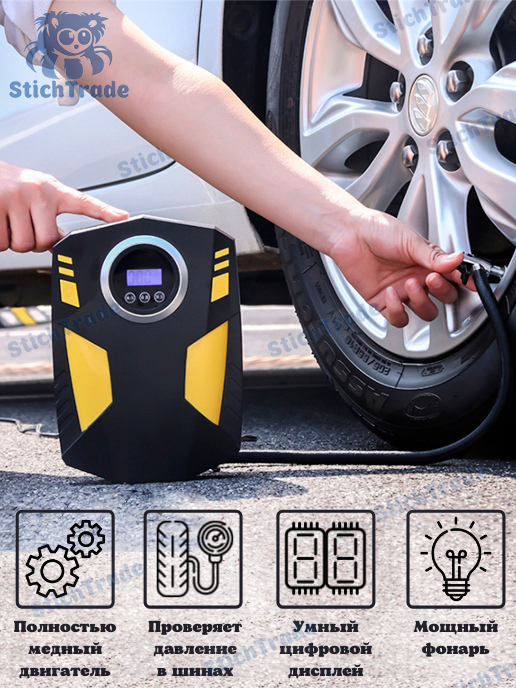 For starters, you might be able to find a free air pump, meaning you won’t have to spend anything. In fact, several states require that the air pumps are free to use.
For starters, you might be able to find a free air pump, meaning you won’t have to spend anything. In fact, several states require that the air pumps are free to use.
Additionally, the gas station air pump is going to be available 24 hours a day. If you are driving home after a late night, you can still ensure that your tires are properly inflated. The gas station air pump is also quick, so you won’t be spending a lot of time waiting around.
When emergencies happen, it isn’t always convenient to drive all the way home. Plus, it might not be safe if the tires are getting low. Instead, swing in the gas station and pump them up so you don’t have to wait in line at the nearest tire center.
Why Maintain Proper Tire Pressure1. Increased Fuel EfficiencyWhen the tires become underinflated, gas mileage gets thrown out the window. As friction increases on the road surface, you pay more to operate your vehicle.
While you might only lose a few miles per gallon, every penny counts.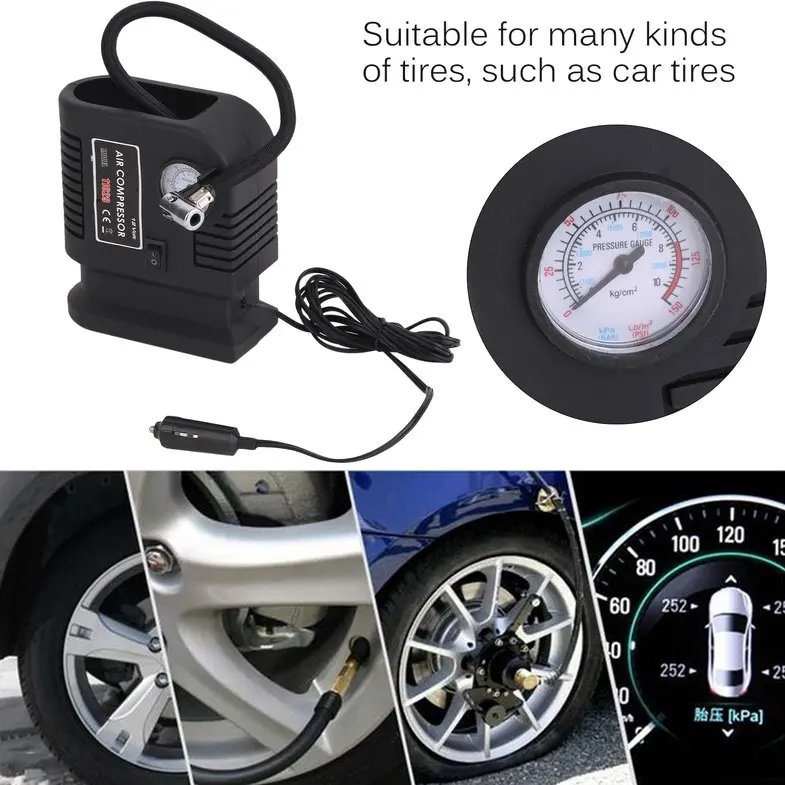 This is especially true when gas prices are on the rise.
This is especially true when gas prices are on the rise.
RELATED: Is It Dangerous to Drive with Low Tire Pressure? (& What to Do)
2. Increased SafetyTires with excessive amounts of air inside can blow out on the road. The sudden loss of air can lead to an accident and injury.
Plus, the underinflated tire is just as dangerous. If it goes flat unexpectedly, you could be in a lot of trouble.
3. Better Handling/GripWhen the car tires are underinflated, they are more susceptible to hydroplaning. It’s easy to lose control of the vehicle when this happens.
Additionally, with the right tire pressures, you gain more traction. This added grip allows you to brake better, accelerate easier and navigate varying terrains.
4. Longer Tire LifeUnderinflated tires are going to wear out much faster than those at appropriate levels. If you want to put tires on the car less frequently, it’s important to keep them running with the right pressures.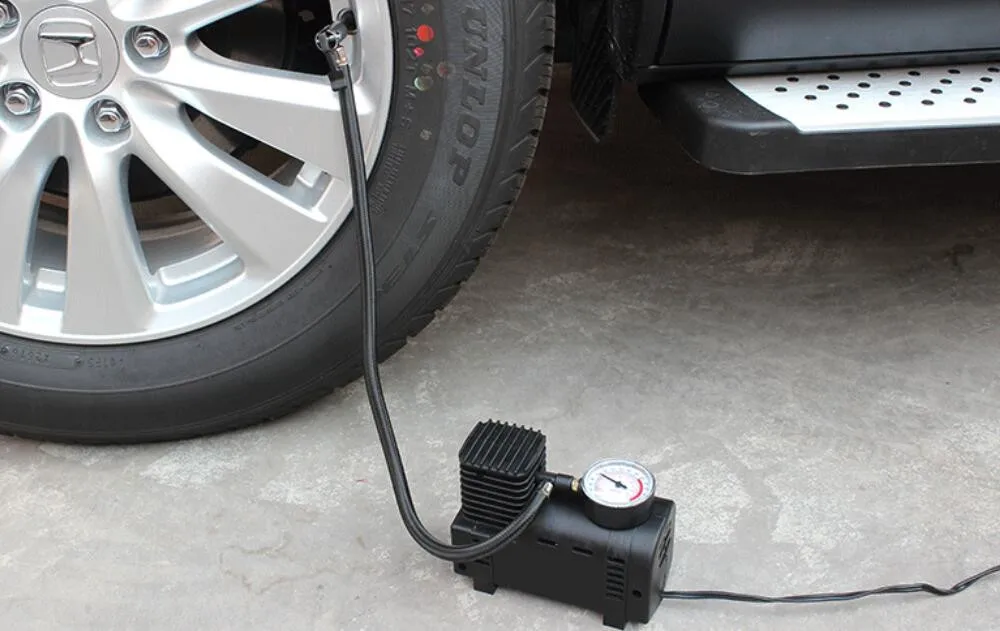
You should check the tire pressures every month, at a minimum. Aside from this, you should double-check the pressure when the temperature drops or rises significantly. For every 10 degree change, the PSI can change by 1. Based on this, any sudden change could dramatically affect the pressure inside the tire and could put you in danger if you aren’t careful.
Was this article helpful?
YesNo
Autoblog is not affiliated with the brands featured in our articles, but when you make a purchase through the links on our site, we may earn a commission.
Don't wait until you get to the gas station to take care of your tires. These great car tire air pumps can help you in a pinch. Cars rely on inflated rubber tires to move around without damaging the components inside them. However, tires are not 100% airtight and over time air will escape from the tire causing it to deflate. Flat tires are dangerous and drivers should always be on the lookout for signs that their vehicle may have a flat tire.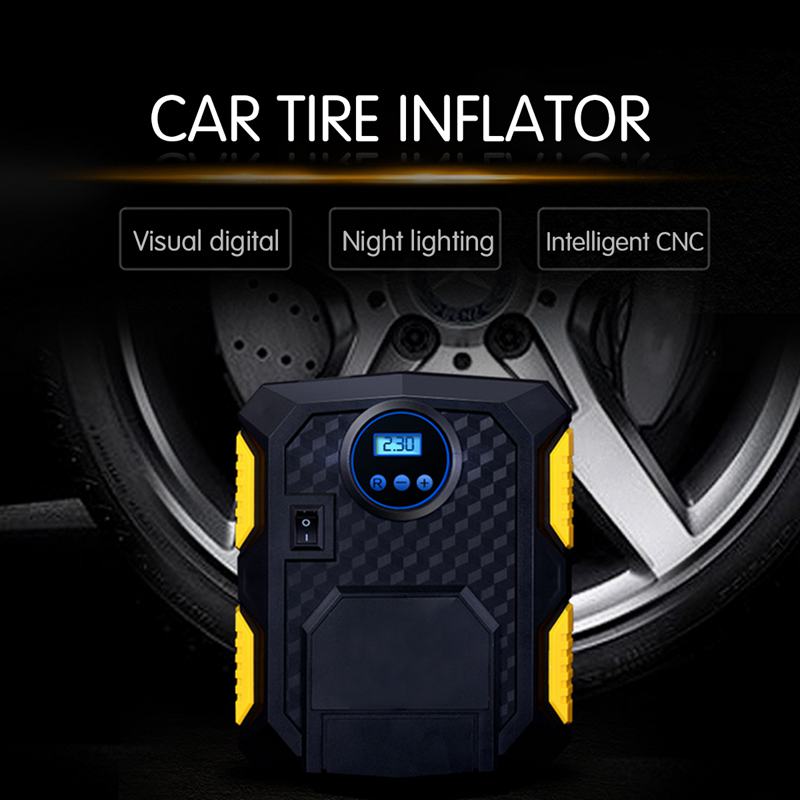
If you don't want to drive to the gas station or repair shop to inflate your car's tires, get your hands on one of our favorite car tire pumps. They are durable, allow you to pump the right amount of air into the tires, and most importantly, they are also portable. If that sounds like something you'd like to add to your car's emergency kit, take a look at these five car tire pumps that we think can make your life so much easier.
GSPSCN Twin Cylinder Air Compressor: Our Pick
Buy on Amazon
This GSPSCN Twin Cylinder Air Compressor starts our list strong and it's just as powerful , as it looks. It can be powered from your vehicle's power outlet, allowing you to use it where and when you need it, and comes with a complete tire inflation kit, giving you everything you need to inflate your tires right out of the box. The kit includes a hose, an extension for hard-to-reach places, various adapters and even some clamps and cables.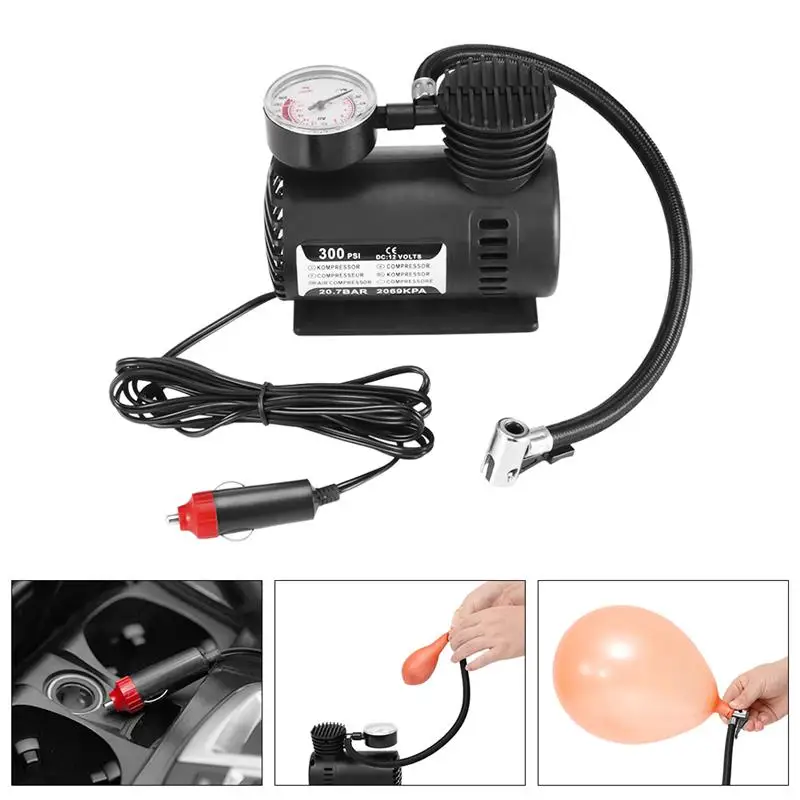 It all fits perfectly in the included carry bag, making this a great gift for those who are always on the go.
It all fits perfectly in the included carry bag, making this a great gift for those who are always on the go.
Slime 40050 12V Portable Car Air Compressor: Another great option
Buy on Amazon
There are a lot of things to learn when you first get behind the wheel and it can be hard to get used to everything. Some novice drivers may feel overwhelmed using things like air compressors and tire inflators, but luckily some of them are designed specifically for easy use - in fact, they are so simple that you only need to press one button to use them. . This one-button tire inflator from Slime is great for those who don't want to get bogged down in extra features.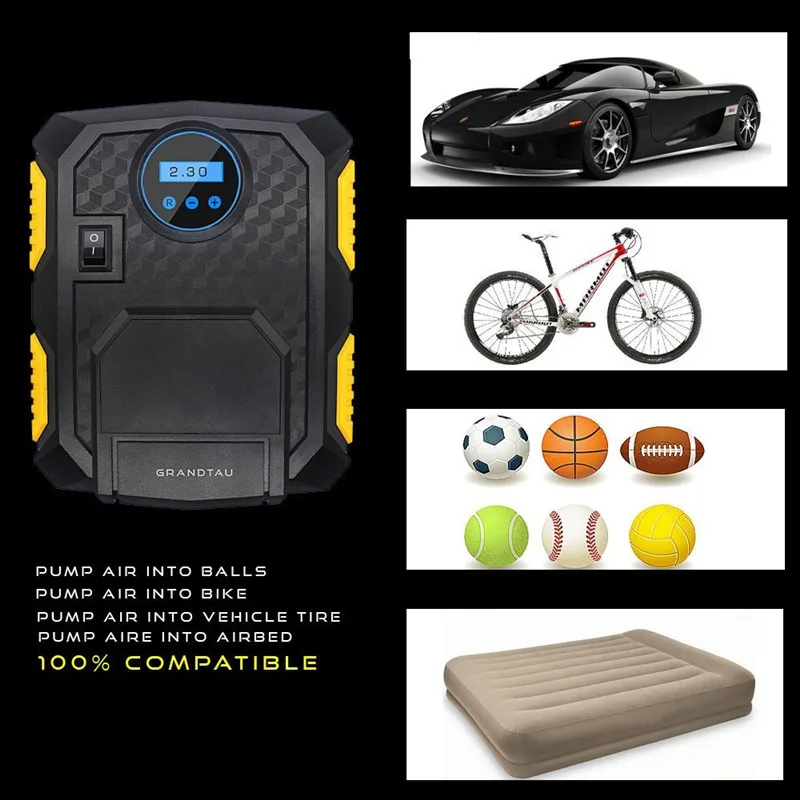 It has an easy-to-see green button that can be pressed at any time, as well as a pressure gauge that tells you when to stop. The inflator also comes with an LED light that can improve visibility if you use it in dim light or at night.
It has an easy-to-see green button that can be pressed at any time, as well as a pressure gauge that tells you when to stop. The inflator also comes with an LED light that can improve visibility if you use it in dim light or at night.
EPAuto 12V DC Portable Air Compressor Pump: also consider
Buy on Amazon
Many air compressors use an analog gauge to display pressure, but some modern compressors use a digital display instead. The benefit of a digital display is that it's often easier to read, and with LED lighting, you won't have to illuminate the sensor at night. This EPAuto portable air compressor features a bright LED display, making it easy to check your tire pressure at any time of the day (or night).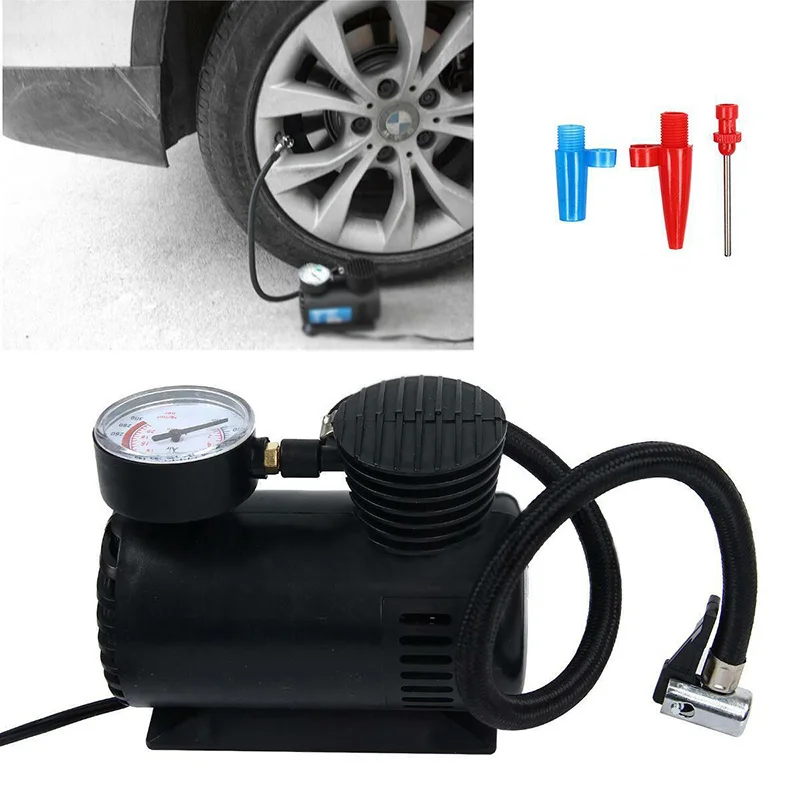 This compressor pump is available in four different colors (red, blue, yellow and green) and its large LED can be directed with a conveniently located knob. It can light up your garage for night car maintenance and overall it is a reliable product with a good digital display.
This compressor pump is available in four different colors (red, blue, yellow and green) and its large LED can be directed with a conveniently located knob. It can light up your garage for night car maintenance and overall it is a reliable product with a good digital display.
Tire Inflator VacLife Air Compressor: Another Option
Buy on Amazon
Of all the air compressors and tire inflators on our list, this one from VacLife is perhaps the most beautiful. It has a modern, minimalist look, but its good looks don't come at a high price - what's most surprising about this air compressor is that it's relatively inexpensive and won't cost you more than $40.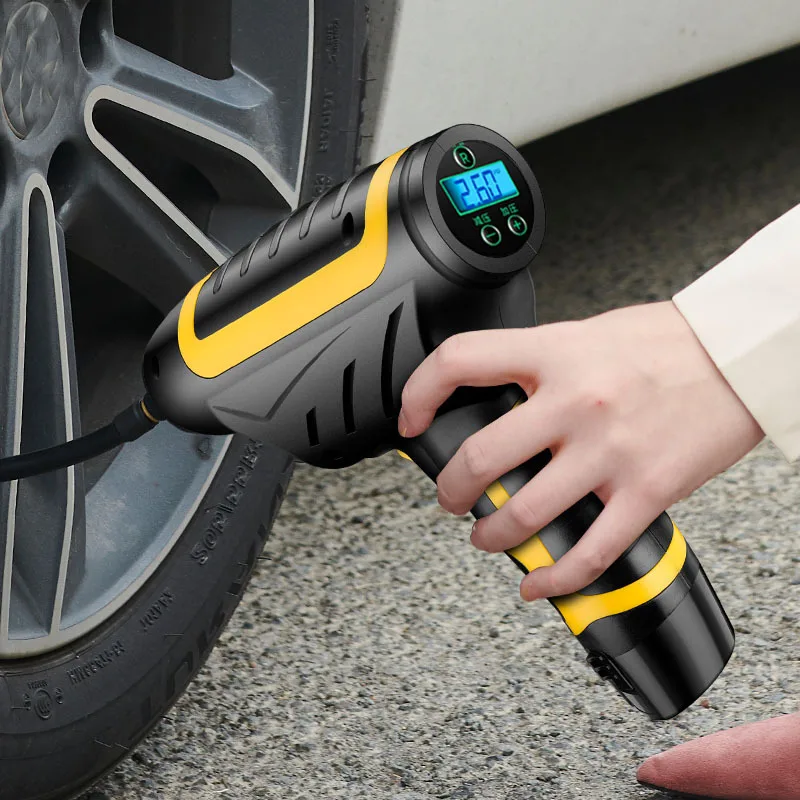 The compressor has an easy-to-read digital display and various buttons to control its settings, which go well with the design of the unit. It comes with needles and adapters to blow air into most inflatables, but it can't handle anything over 50 psi (psi), so it's probably not the best choice if you're looking for something something to inflate your tires for big trucks.
The compressor has an easy-to-read digital display and various buttons to control its settings, which go well with the design of the unit. It comes with needles and adapters to blow air into most inflatables, but it can't handle anything over 50 psi (psi), so it's probably not the best choice if you're looking for something something to inflate your tires for big trucks.
AstroAI Air Compressor: Also try
Buy on Amazon
If power is what you're looking for, you've definitely found it in the following product. This AstroAI air compressor can handle pressures up to 100 psi and can inflate a car tire from 0 to 35 psi in less than five minutes.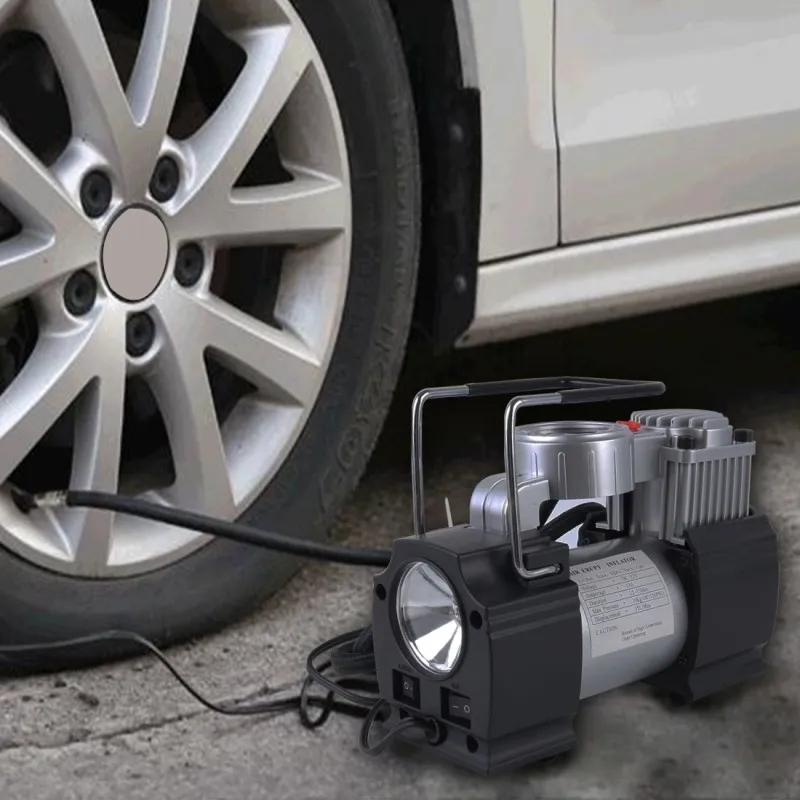 It also has a digital display that pairs well with one of its features, programmable pumping. You can set the desired pressure and have the compressor pump air until it reaches the set value. While this compressor is powerful, it also has some limitations. Perhaps the biggest one is the fact that after 10-15 minutes of use, you will have to turn it off to let the compressor rest. This can be a problem if you need to inflate a few tires as soon as possible, but if you just need something to inflate quickly, it probably won't be such a big deal.
It also has a digital display that pairs well with one of its features, programmable pumping. You can set the desired pressure and have the compressor pump air until it reaches the set value. While this compressor is powerful, it also has some limitations. Perhaps the biggest one is the fact that after 10-15 minutes of use, you will have to turn it off to let the compressor rest. This can be a problem if you need to inflate a few tires as soon as possible, but if you just need something to inflate quickly, it probably won't be such a big deal.
If you need to inflate your car tires in an emergency, you will need a portable air pump or compressor nearby.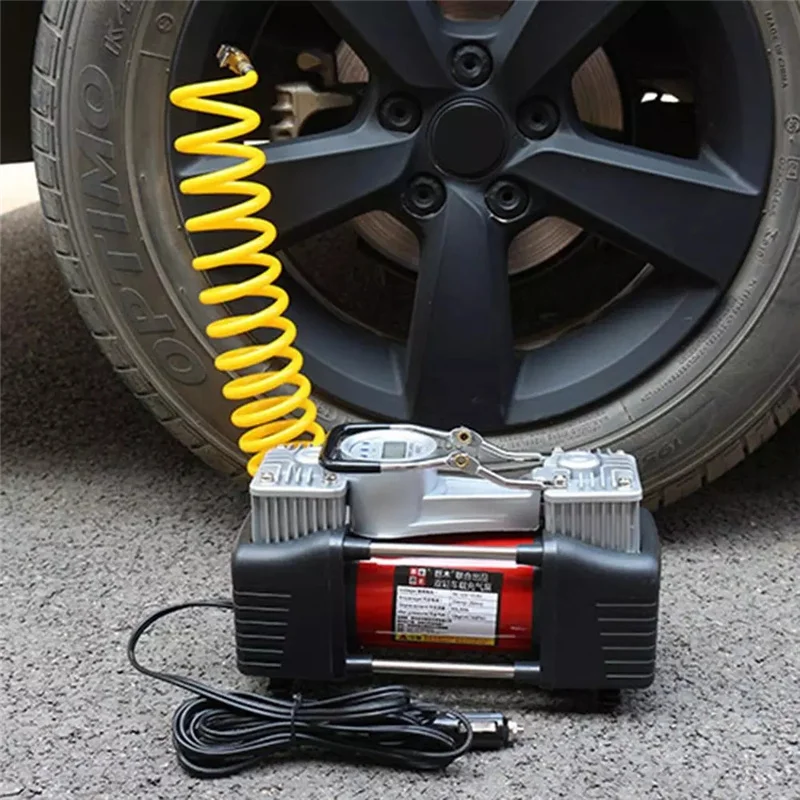 Here's everything you need to know about car tire air pumps.
Here's everything you need to know about car tire air pumps.
Inflate your tires as a last resort
The main reason many drivers invest in a good air compressor kit is that they can always inflate their tires, even in an emergency. There are many situations where you might suddenly need air - if you're in the middle of nowhere and notice that one of your tires is flat, you'll probably want to stop and pump it up as quickly as possible.
Having compressed air available at all times can save you, but it can also easily save other drivers who don't have their own air compressors. If you see someone stuck on the side of the road, you can help them if they have a flat tire.
Save time and money in the long run
While not exactly expensive, tire inflation costs money. This is especially true if you have multiple cars or multiple spare tires - keeping them all inflated costs money and you will have to shell out for every tire inflation as well as taking your car(s) to a local gas station.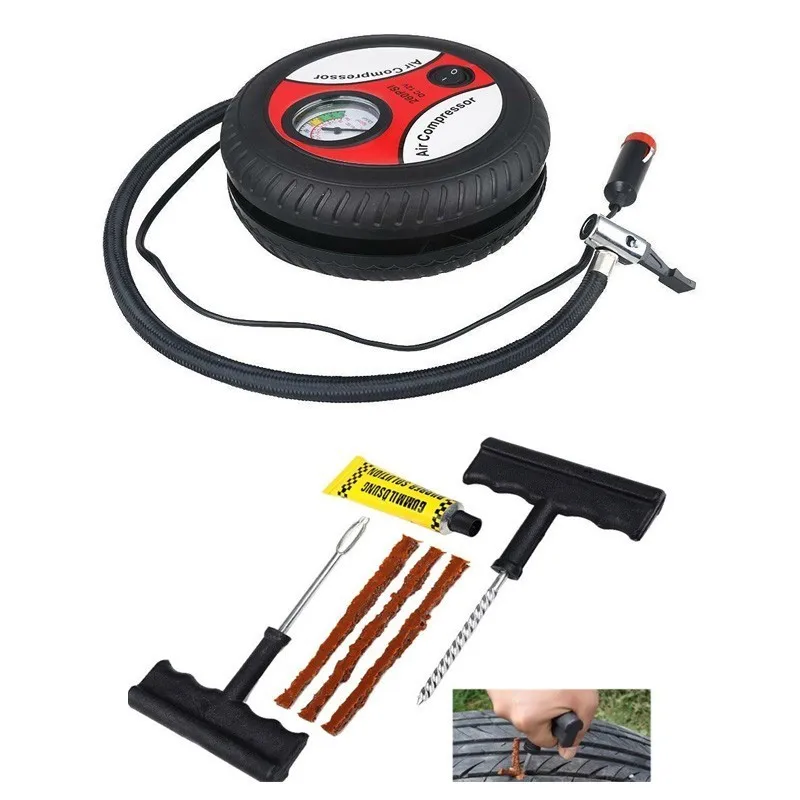 station or repair shop for refueling.
station or repair shop for refueling.
Instead of all this hassle, inflate your tires at home with your own tire pump or air compressor. It's simple and convenient, and you won't have to leave the garage to get your tires in good condition. You can also check your tires the night before and skip the gas station trip when you're ready to hit the road.
Inflate more than just tires
Air compressors are most commonly used on tires, but there are many other things that can benefit from the compressed air they provide. Always keep your sports balls inflated with an air compressor so you're always ready to play basketball, volleyball, football, and more. It's not worth training and playing with a deflated ball, but having a compressor on hand can help you stay on top of your game. games.
Air compressors also have a more limited application, such as inflating balloons. You probably won't use air compressors other than tires and balls, but it's always a good idea to know your options just in case.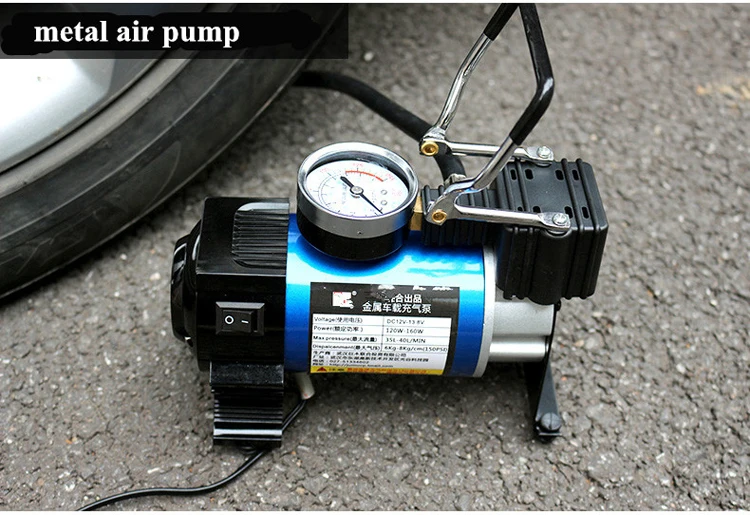
Step 1: Connect the pump
To operate the car tire air pump, you first need to connect it to a power source. Car tire pumps most often use your car's outlet as a power source - it has enough power to run the pump efficiently, and your car outlet is likely to be your only power source on the road anyway.
If you have a car tire air pump that can be plugged into a wall outlet, you can use that instead. Wall outlets provide better power, and you'll get more juice out of them than a regular car outlet.
Step 2: Insert nozzle
With the hose connected to the compressor, connect the other end to your vehicle's tire through the nozzle. If you can't see it properly, we recommend using your compressor's built-in LED indicator (if you have one) or a flashlight instead.
Step 3: Start pumping
Now that everything is in place, you can start the compressor. Depending on the type of compressor you are using, you may need to follow different instructions, but the general idea is to keep a close eye on the pressure shown on the pressure gauge/display and stop when it reaches the ideal level.
Depending on the type of compressor you are using, you may need to follow different instructions, but the general idea is to keep a close eye on the pressure shown on the pressure gauge/display and stop when it reaches the ideal level.
For analog gauges and basic digital displays, you should follow this method. You'll want to keep an eye on the sensor or display at all times, but feel free to look away and check other things while you wait. Just make sure you're always close to the compressor in case the cable pops out either end or something else happens.
If you have a programmable digital compressor, you can set the desired pressure first instead. You can then start the compressor and it should stop automatically once it reaches the original set pressure. This means you won't need to look at the pressure gauge at all, but you should still monitor the entire process, just to be on the safe side.
There is not much difference between analog and digital car tire pumps. The main difference is in the display and both are pretty easy to understand. The advantage of digital displays is that they have special features (such as programmable inflation), so if you're interested, you can use digital rather than analog.
The main difference is in the display and both are pretty easy to understand. The advantage of digital displays is that they have special features (such as programmable inflation), so if you're interested, you can use digital rather than analog.
Automotive air compressors and tire pumps will set you back $15 to $30, with some a little cheaper and some more expensive. However, you generally won't have to spend more than $50 for a decent air compressor, so try not to worry too much about the price.
Q: Are car tire air pumps safe?
Tire pumps are designed to be powered and used in cars, so they are completely safe even when you are on the side of the road.
Q: How do car tire air pumps work?
Tire pumps take air from the environment and compress it. This compressed air is then directed into the tire, inflating it until it is full.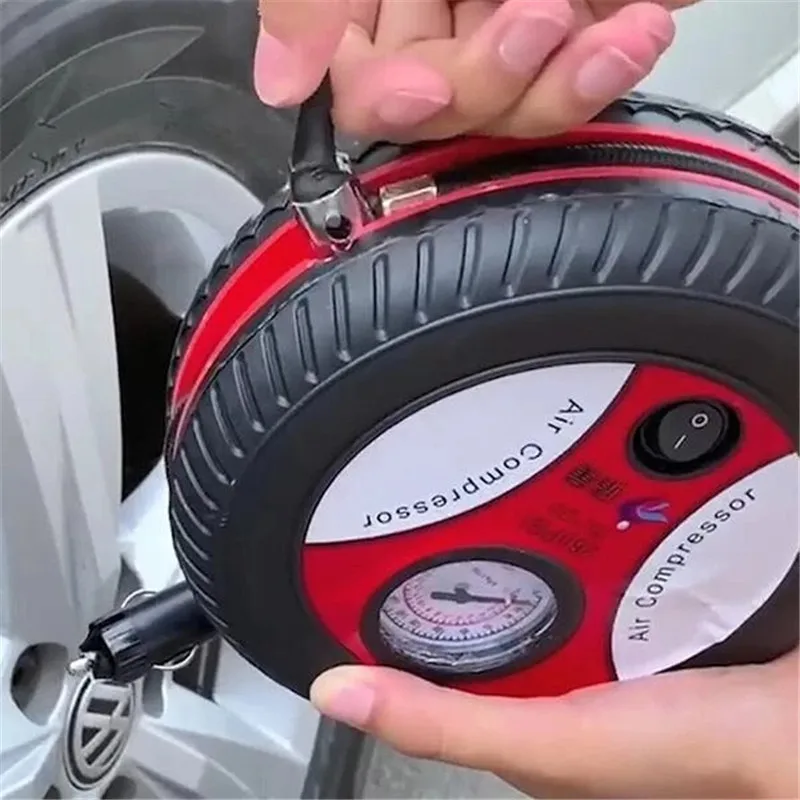
Q: Can air pumps be used for ball car tires?
With the right nozzle adapter, you can use car tire air pumps for sports balls, hot air balloons, inflatable pools and more.
Tire compressors are becoming increasingly popular among motorists, as they greatly facilitate the process of inflating tires. They have successfully replaced hand and foot pumps, which are used less and less. The biggest advantage of electric compressors is that it takes very little time and no physical effort to inflate tires.
However, so that everything went well and without problems, it is important to know how to use the car compressor correctly. So you can achieve maximum efficiency from the device with minimal effort and time.
To begin with, it is worth familiarizing yourself with the main types of automotive compressors. Since it is important to know the features of different models.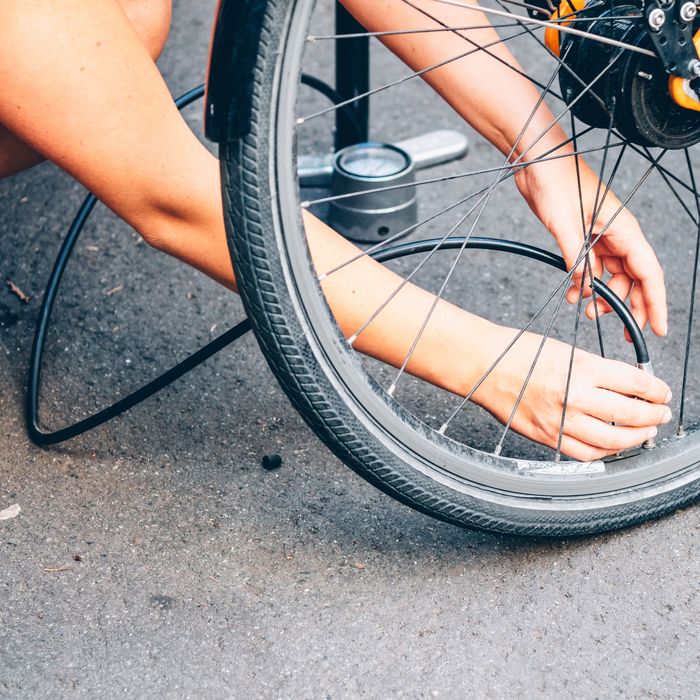
Compressors according to the principle of operation are divided into: piston, diaphragm and rotary.
The reciprocating compressor is the most popular choice. The principle of operation of devices of this type is extremely simple and somewhat resembles the mechanics of a classic internal combustion engine. Reciprocating air compressors use two valves. Of these, the first releases air during the main stroke of the piston, and the second is necessary in order to supply air to the cylinder during the reverse movement of the pusher.
Diaphragm Compressor - small size and metering, quiet operation. They have a completely different design. Their principle of operation is also quite simple: the working rod, with the help of a special cam mechanism, deforms the rubber plate during its movement. As a result, the air inside the closed cavity to which this plate adjoins begins to compress, and then enters a special outlet pipe under high pressure.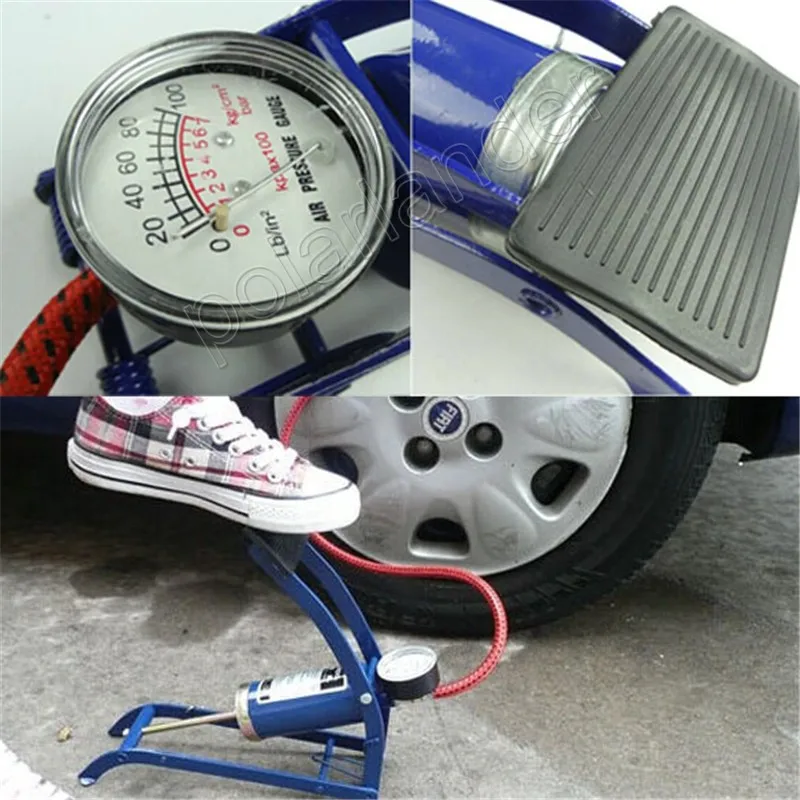 During the reverse movement of the stem, the outlet valve closes, as a result, gas is sucked in through the inlet pipe.
During the reverse movement of the stem, the outlet valve closes, as a result, gas is sucked in through the inlet pipe.
The rotary compressor is a separate type that is usually used where high performance is needed: inflating SUV tires, trucks, etc. The principle of operation of such a device is based on the use of a special rotor in the design. This results in very high performance. However, they also have certain disadvantages: large mass and dimensions, the need for regular maintenance, as well as a rather short working life. Therefore, this type of compressor is not very popular, despite the good and fast operation.
Every motorist should be able to use a car compressor, especially since there is nothing complicated about it. It is only important to do everything consistently and correctly, following the recommendations of specialists. Then everything will go quickly and without emergency situations.
To begin with, before starting to inflate tires, it is worthwhile to figure out the type of power supply for the device.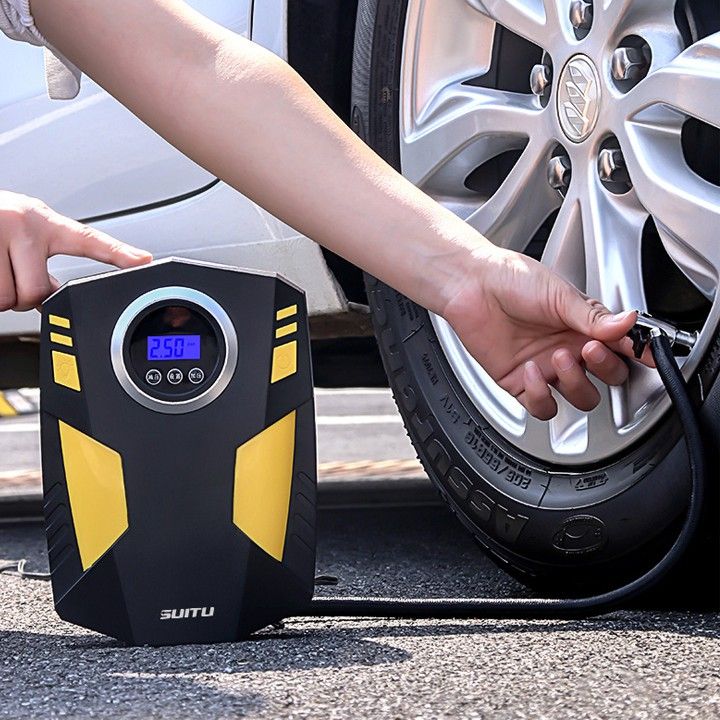 The compressor power cable can be connected both to the car's on-board network through the cigarette lighter socket, or directly to the battery. This should be indicated in the instructions for the device. If you don't know, then look at the wire. Most cheap models usually have only one connection option - through the cigarette lighter. More expensive models can have two types of connection at once, they can have alligator clips on the wire for connecting to a car battery, and a cigarette lighter socket. Naturally, compressors connected to a battery usually have more power. Such models are more productive and efficient.
The compressor power cable can be connected both to the car's on-board network through the cigarette lighter socket, or directly to the battery. This should be indicated in the instructions for the device. If you don't know, then look at the wire. Most cheap models usually have only one connection option - through the cigarette lighter. More expensive models can have two types of connection at once, they can have alligator clips on the wire for connecting to a car battery, and a cigarette lighter socket. Naturally, compressors connected to a battery usually have more power. Such models are more productive and efficient.
Once you have figured out the type of connection, you can proceed directly to the most important process.
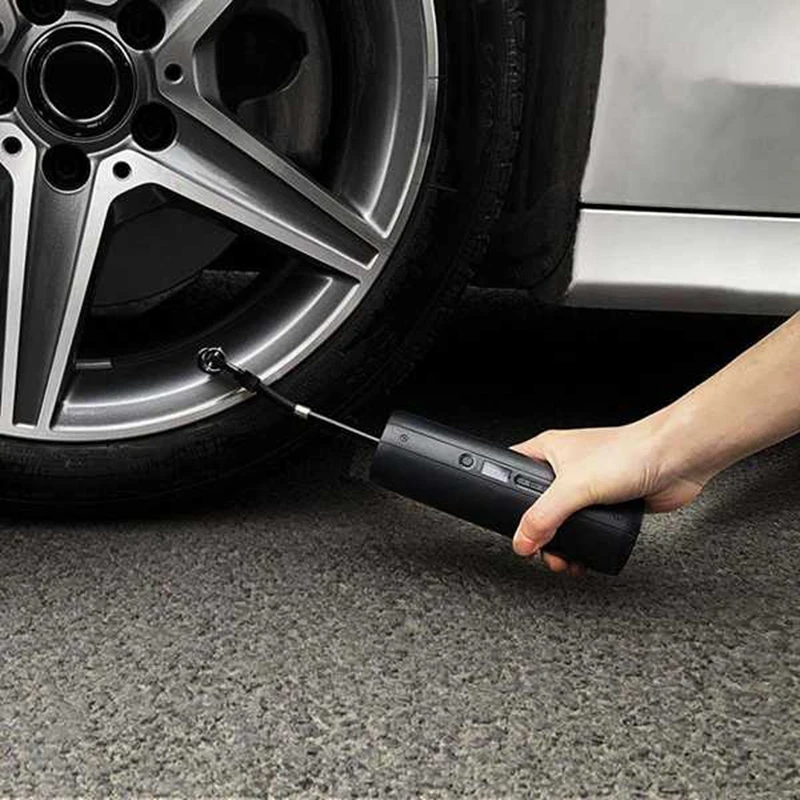 And you will know exactly how much you need to pump them up.
And you will know exactly how much you need to pump them up. Also remember that it is recommended to inflate tires or check the level of pressure in them in the same conditions in which the car is usually used. Rubber should not cool down after a ride. To achieve the optimal temperature, experts recommend waiting for about half an hour after the trip, taking into account weather conditions. If you do not follow this rule, the pressure may not be as it should be. Since temperature has a great influence on the level of pressure inside the wheel.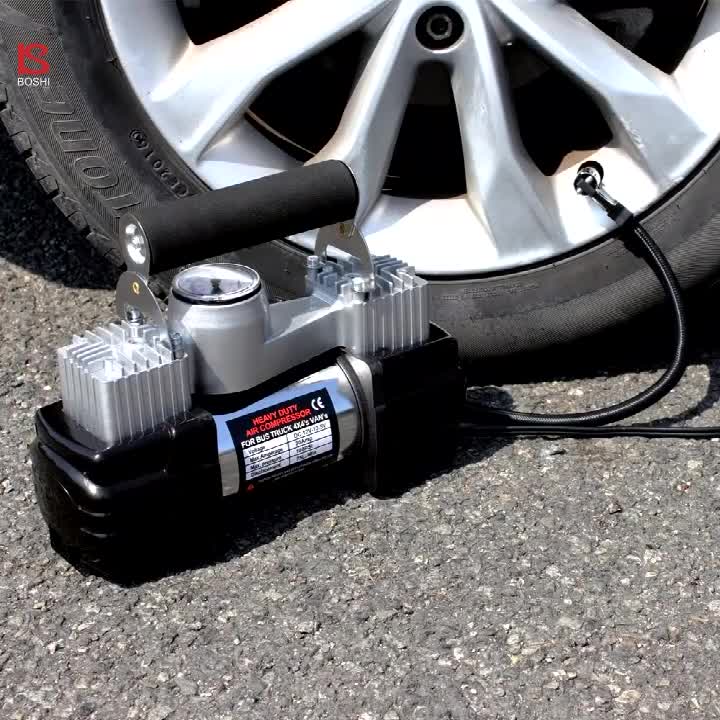 For example, if you pump up tires in cold weather, then when the car gets into a warmer room, due to a sharp change in temperature to positive, the pressure inside the wheel will rise. This, in turn, can cause rather sad and unpleasant consequences.
For example, if you pump up tires in cold weather, then when the car gets into a warmer room, due to a sharp change in temperature to positive, the pressure inside the wheel will rise. This, in turn, can cause rather sad and unpleasant consequences.
When using a membrane compressor, pay attention to the following features and recommendations:
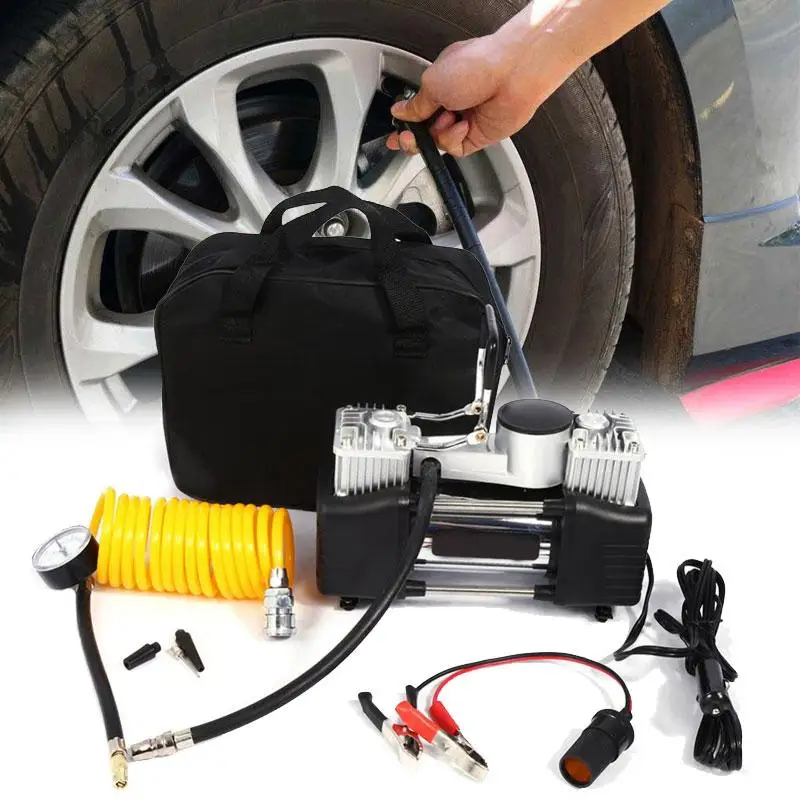 This leads to a rapid failure of the device.
This leads to a rapid failure of the device. Piston compressors do not have these problems. These devices work stably in any weather and temperature conditions, both in frost and in heat. However, they will also not be able to work for a very long time without a break, since a very large load will fall on the piston, which will negatively affect the duration of work. However, they can work longer without interruption than their membrane counterparts.
As you can see, there are no difficulties in learning how to use an electric compressor. Everything is simple here, connect to power, then connect to the wheel and turn it on. The main thing is to monitor the pressure level and follow the recommendations of the machine manufacturer. The choice of a particular model depends on the size of the wheels of your car, personal preferences and your financial capabilities. In our online store 130.com.ua you can buy a car compressor in Kyiv, Odessa and Kharkov at a bargain price.